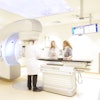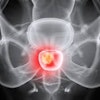If a group of about 100 men predominantly in their 60s and 70s is typical, prostate cancer patients who receive external-beam radiation therapy (EBRT) face a decline in sexual function for only a two-year period following treatment.
For a patient cohort followed at Thomas Jefferson University Hospital in Philadelphia, the strongest predictor of sexual function after two years was the level of sexual functionality prior to treatment, according to a report published in the January issue of the International Journal of Radiation Oncology, Biology, Physics (2010, Vol. 76:1, pp 31-35).
Principal investigator Dr. Richard Valicenti, currently professor and chairman of the radiation oncology department at the University of California, Davis Cancer Center in Sacramento, CA, gave questionnaires on sexual function to patients who received EBRT (radiation dose, 66.6-79.2 Gy) for prostate cancer between 1996 and 2002.
Valicenti asked patients to complete questionnaires about their sexual functionality for the 30 days immediately prior to treatment, at six months afterward, and then at annual intervals until six years after treatment. The group started with 143 patients; 114 completed surveys at the two-year follow-up point, while 44 completed surveys at the six-year follow-up.
Their age range was 50 to 82, with a median age of 69 years. The majority had a Gleason score of 6 (58.9%) or 7 (22.7%), and none had been prescribed any hormone therapy or had undergone radical prostatectomy.
The patients were evaluated for sexual drive, erectile function, ejaculatory function, and overall satisfaction. Of the 100 patients who stated they were potent at baseline, 82 were potent at 12-month follow-up and 81 at two years. Erectile preservation was similar, at 74.4% and 70.4%, respectively. Twenty-nine of the 44 patients (66%) who completed the survey six years later reported potency.
For the 44 men who completed year 3 through year 6 questionnaires, the researchers found no statistically significant change in any of the measurements of sexual function, including sexual drive, erectile function, ejaculatory function, and overall satisfaction.
Based on these findings, the authors suggested that the assumption that sexual function has a slow, progressive decline after EBRT treatment might be incorrect.
By Cynthia E. Keen
AuntMinnie.com staff writer
January 6, 2010
Related Reading
Preservation of erectile function excellent after prostate brachytherapy, August 22, 2007
Prostate cancer treatments yield different quality-of-life outcomes, June 11, 2007
Copyright © 2010 AuntMinnie.com



















